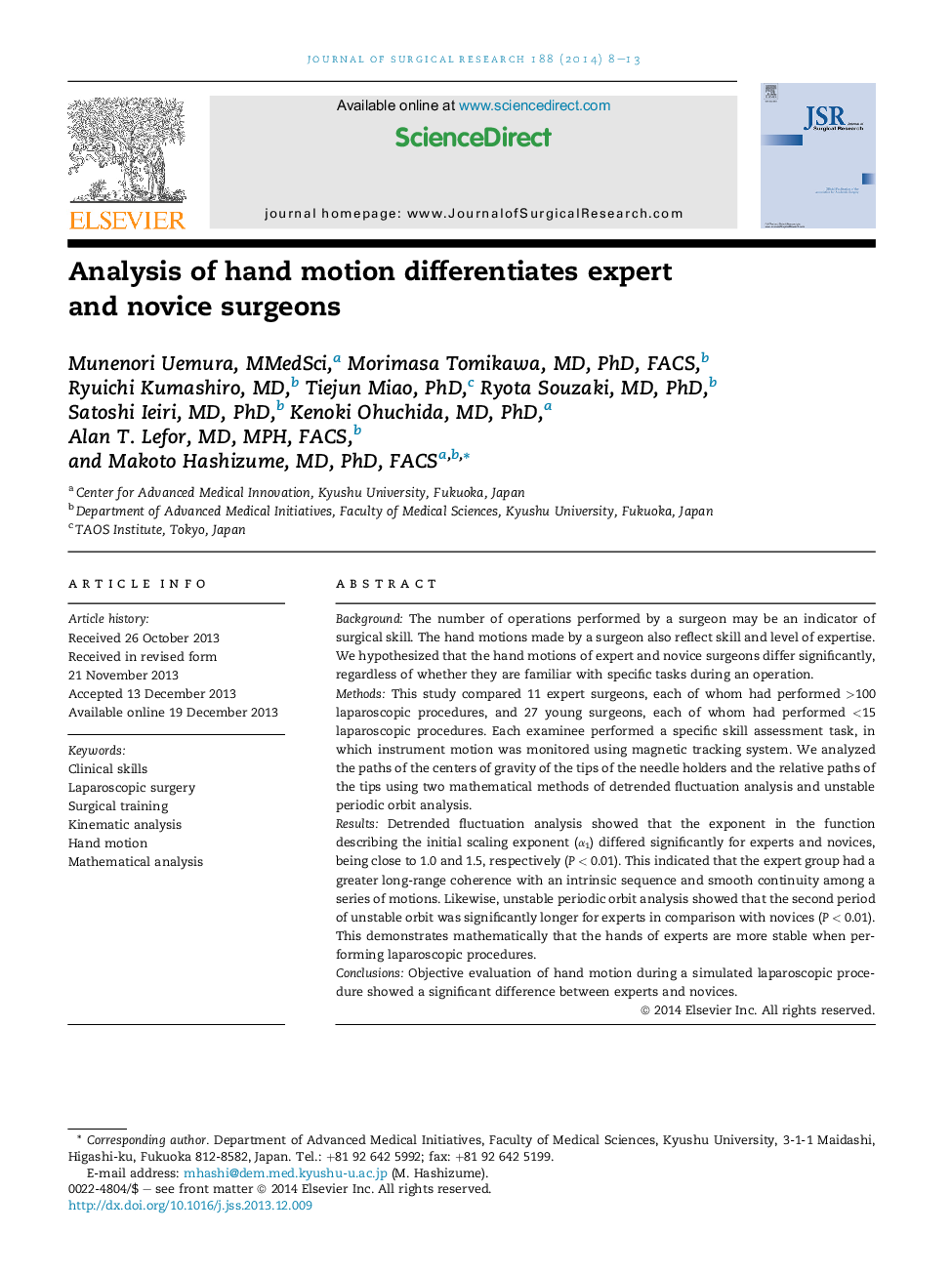| Article ID | Journal | Published Year | Pages | File Type |
|---|---|---|---|---|
| 4300216 | Journal of Surgical Research | 2014 | 6 Pages |
BackgroundThe number of operations performed by a surgeon may be an indicator of surgical skill. The hand motions made by a surgeon also reflect skill and level of expertise. We hypothesized that the hand motions of expert and novice surgeons differ significantly, regardless of whether they are familiar with specific tasks during an operation.MethodsThis study compared 11 expert surgeons, each of whom had performed >100 laparoscopic procedures, and 27 young surgeons, each of whom had performed <15 laparoscopic procedures. Each examinee performed a specific skill assessment task, in which instrument motion was monitored using magnetic tracking system. We analyzed the paths of the centers of gravity of the tips of the needle holders and the relative paths of the tips using two mathematical methods of detrended fluctuation analysis and unstable periodic orbit analysis.ResultsDetrended fluctuation analysis showed that the exponent in the function describing the initial scaling exponent (α1) differed significantly for experts and novices, being close to 1.0 and 1.5, respectively (P < 0.01). This indicated that the expert group had a greater long-range coherence with an intrinsic sequence and smooth continuity among a series of motions. Likewise, unstable periodic orbit analysis showed that the second period of unstable orbit was significantly longer for experts in comparison with novices (P < 0.01). This demonstrates mathematically that the hands of experts are more stable when performing laparoscopic procedures.ConclusionsObjective evaluation of hand motion during a simulated laparoscopic procedure showed a significant difference between experts and novices.
